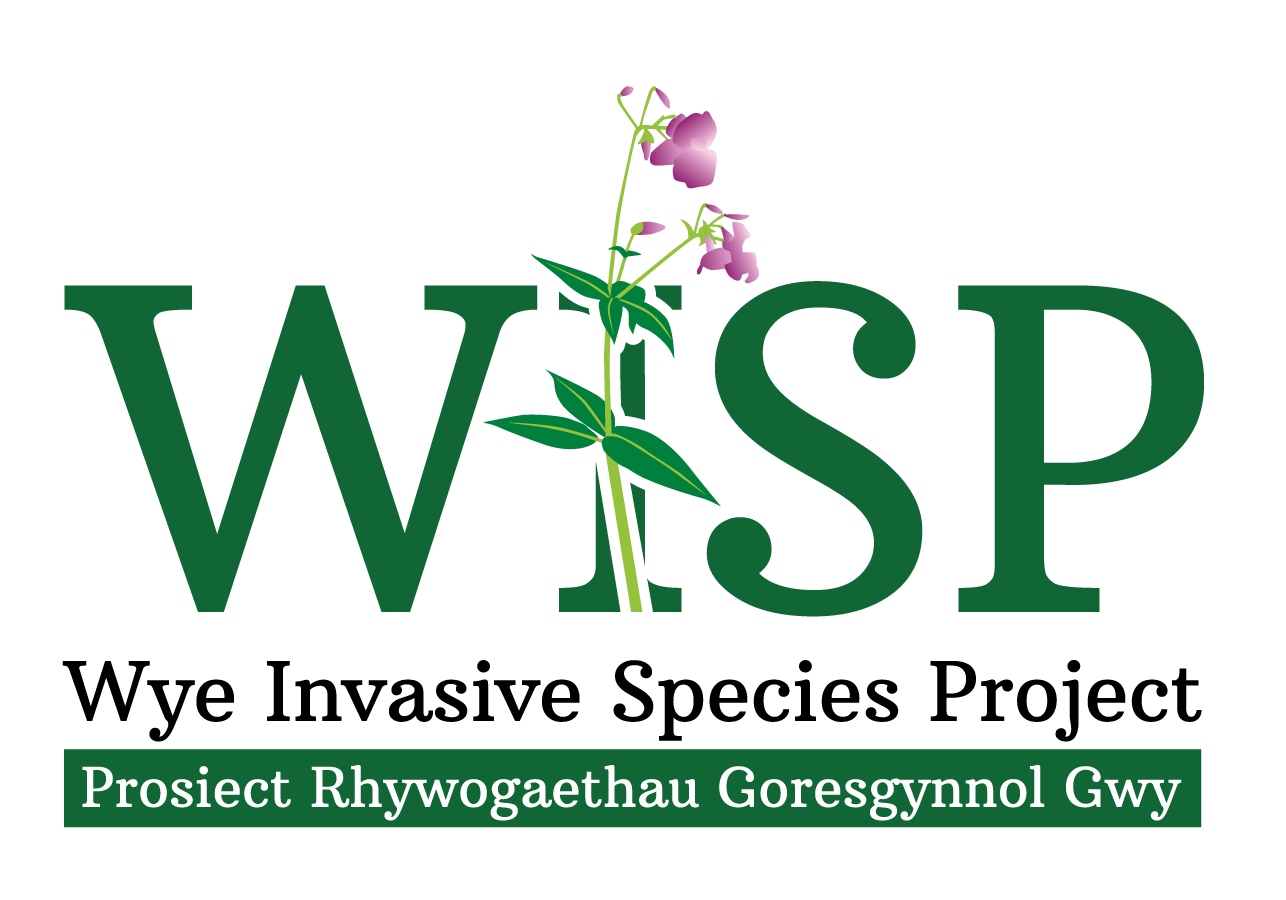
The aim of WISP is to support the local communities of the lower Wye Valley AONB in tackling 3 Invasive Non-Native Species across our project area – Himalayan balsam (Impatiens glandulifera), Japanese knotweed (Fallopia japonica) and American Skunk Cabbage (Lysichiton americanum). These are the worst offenders, causing significant problems and they are found throughout the lower Wye Valley. Together we will work to control the spread of these species, helping to reverse the catastrophic decline of our biodiversity and improve the resilience of our river catchments.
Click on the pictures below to read about our 3 target species and find out what we are doing and what you can do to tackle them.
Why do we need WISP?
Invasive Non-Native Species (INNS) are the second greatest threat to biodiversity¹ after habitat loss and fragmentation². They can also significantly increase the flood risk as they can block waterways and, by leaving riverbanks and hillslopes bare of stabilising vegetation every winter, they increase erosion and lead to more sediment and debris entering our watercourses. With nature in a catastrophic decline and high rainfall events increasing in frequency and severity as our climate changes, you can understand why we’re taking this so seriously.
Of course, these INNS don’t solely impact our ecology, they can impact us too. INNS have been estimated to cost the UK economy at least £1.8 billion pounds annually3. They mainly affect farming and horticultural sectors, but can affect transport, construction, recreation, aquaculture and utilities. There are also many hidden costs. For example, growing so tall and densely along riverbanks – Himalayan Balsam is now Britain’s largest annual plant – this pest plant can impede visibility and prevent access and alter the appearance of our landscapes and riverscapes (something that’s very difficult to put a price on).
Our target species either produce large numbers of seeds every year, which are spread by humans, by wind and/or by water, or they have stubborn rhizomes (roots). Seeds, plant and root fragments are readily spread by water and new populations of plants are often found downstream of original sites. So, to be effective, plant control needs to work at a catchment scale (encompassing all the small streams that feed into the main river), starting at the most upstream or uphill extent. Working at a catchment scale is a serious challenge, but by working together with all stakeholders we can get these invasive plant populations under control.
Click on the buttons below to find out what’s happening inside the AONB and wider Wye catchment, find out how get involved as a community, report invasive plant sightings, provide consent (as a landowner or resident) to have control work carried out on your property and learn more about INNS…..
References & sources:
¹ Biodiversity is defined by the World Wildlife Fund as, ‘all the different kinds of life you’ll find in one area—the variety of animals, plants, fungi, and even microorganisms like bacteria that make up our natural world. Each of these species and organisms work together in ecosystems, like an intricate web, to maintain balance and support life. Biodiversity supports everything in nature that we need to survive: food, clean water, medicine, and shelter.’
2 Convention on Biological diversity (2009) Invasive alien species – A threat to biodiversity. https://www.cbd.int/doc/bioday/2009/idb-2009-booklet-en.pdf
3 F. Williams, R. Eschen, A. Harris, D. Djeddour, C. Pratt, R.S. Shaw, S. Varia, J. Lamontagne-Godwin, S.E. Thomas, S.T. Murphy (2010). The Economic Cost of Invasive Non-Native Species to the British Economy. CABI, Wallingford, 198 pp.